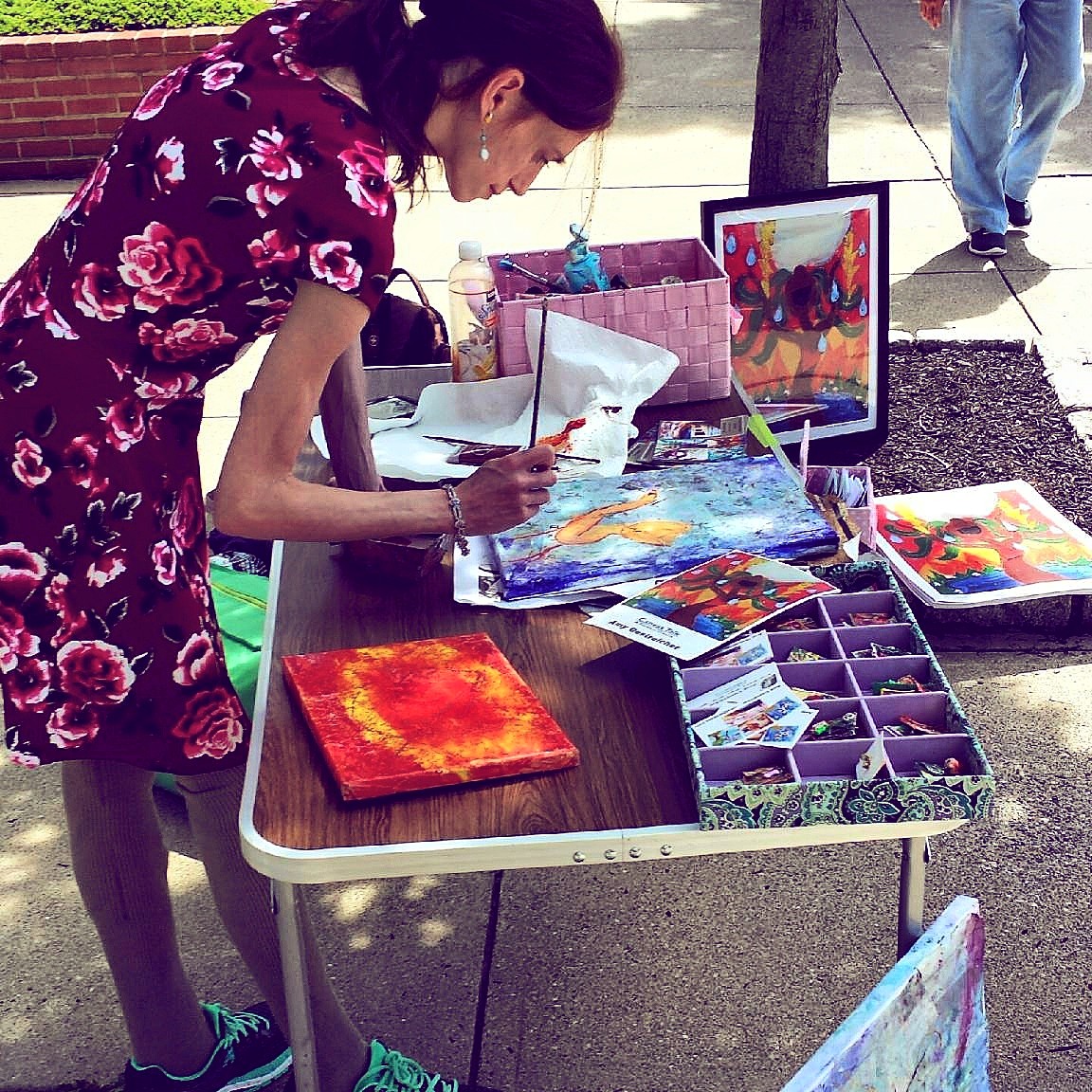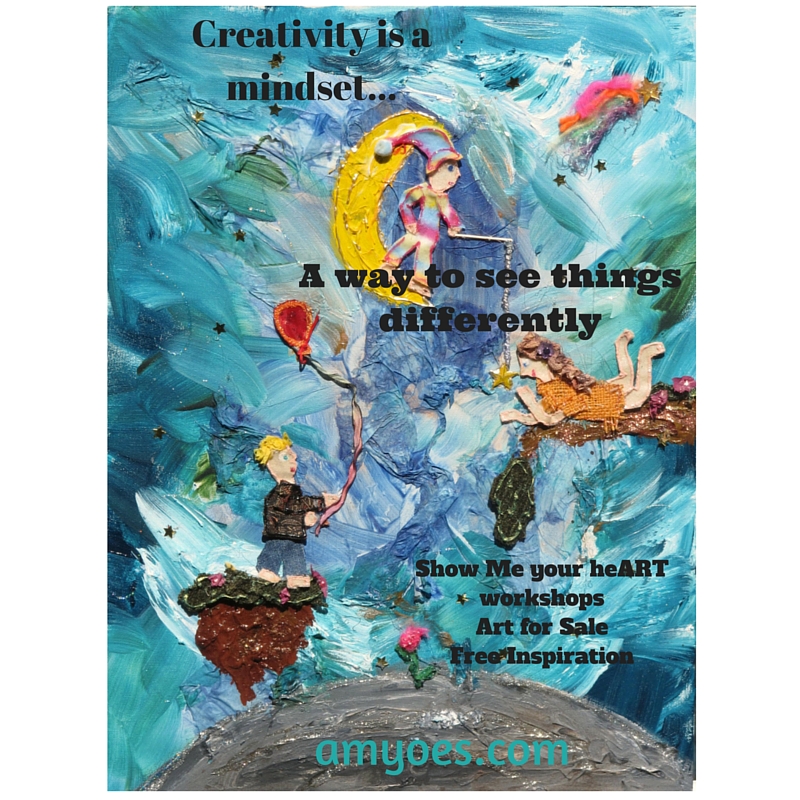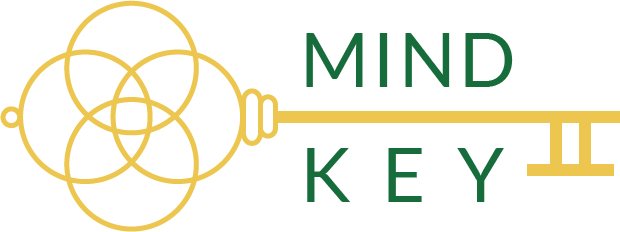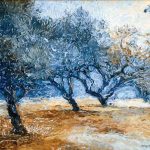
Creativity: The Art of Happy
By Amanda Hollenbeck
Vulnerability is not a feeling people tend to view positively. Typically, vulnerability is related to the pain after a heartbreak, the tears after a death, or to the shame after a failure. Overcoming vulnerability tends to become a focus on the end result, rather than the journey. However, it’s impossible to find happiness without being vulnerable enough to take chances to create that happiness.
The consequences of numbing vulnerability
In her 2012 TEDx talk in Houston, Brene Brown, a research professor at the University of Houston Graduate College of Social Work, states that people attempt to numb vulnerability because it has been largely tied to this idea of pain, of being in debt, of having obesity, of being addicted, or of being heavily medicated.
Completely omitting vulnerability is one way to numb the unpleasant feelings associated with these problems. However, numbing this emotion also paralyzes its partner—happiness. People then become unhappy, underwhelmed, shut-off, and unwilling to open their heart to creativity. If people aren’t vulnerable enough to trust in themselves and to trust in the unpredictable result, their willingness to be creative will never blossom.
Breaking open to face vulnerability
Just as there is stigma behind the term vulnerability, the notion of being “broken open” has negative connotations attached to it, as well. Most people associate it with pain or something extremely unpleasant. Artist, writer and star of her own one-woman-show, Gutless and Grateful, Amy Oestreicher, describes being “broken open” as a renewal that reveals the creativity inside. Amy calls this “the best kind of broken” that leads to inventiveness and beauty.
In her book Broken Open, Elizabeth Lesser points to how difficulty in people’s lives allow them to grow creatively. This liberates them into finding out who they truly are. Once someone is broken open, and the toxins from within are set free, the restraint on inherent creativity is loosened. We find ourselves through this process of breaking, of being vulnerable.

Photo by Amy Oestreicher
Creativity’s role in healing
Amy Oestreicher accredits creativity to the wave of emotions that being broken open creates. She says we must allow ourselves to be shattered in order to to see ourselves in our truest light.
A 2012 study published in the American Journal of Public Health found a connection between art, healing, and public health. As much as vulnerability and being broken open can result in creativity, being creative can result in healing. this happens by reducing physiological and psychological outcomes while stimulating the creative mind. Researchers have concluded that by engaging in the creative arts, people can heal their own wounds, learn to self-reflect, and alter their thinking patterns—all through creativity.
Putting the pieces together
After experiencing that “breaking open” stage, life can start to be put back together—different from how it was before. Amy illustrates this like an unpredictable puzzle— one that is constantly changing to reflect the change in your life and in yourself. This process of putting life back together is how breaking open facilitates creativity. Don’t have a predictable ending; fight for something beyond what you thought you could imagine for yourself.
“That’s what makes a Detourist,” Amy says. Each week in her #LoveMyDetour campaign, she asks people to share their stories of how a detour led them astray, broke them down, and built them up differently. Life does not go as planned and Amy advises that if you find the broken pieces in life, you should enjoy putting them back together again.
That’s why Amy calls creativity “The Art of Happy.” Unhappiness is one of the reasons why people get bored, but recognizing life’s small happinesses can add spark to your day.

Here are some of Amy’s creative writing prompts for curbing boredom and using creativity as a mindset:
- Spot the biggest risk you could take in that moment.
- Don’t plan anything and be spontaneous.
- Be curious and ask questions about the world around you.
- Put a word to every sound you hear. Describe a gust of wind or the dirt you just stepped in.
- Be a poet and describe the world around you in haikus.
Sparking creativity—Nature’s role in overcoming Vulnerability
If you’ve been overwhelmed by dissatisfaction and restlessness, slipping into a creative mindset can be difficult. If you’re having trouble falling into creativity naturally, Amy advises that you exploring your creative side with a renewed sense of perspective by closing your eyes, taking a deep breath, and going for a walk in nature.
Researchers Attention Restoration Theory (ART) have found that nature ignites creativity. In an interview, Uwe Gesierich, personal trainer, coach, and faculty of the Vancouver THNK School of Creative Leadership said, “The Attention Restoration Theory (ART) says that people can concentrate better in nature. We are better able to cognitively determine the best steps forward. There’s no better way to get that deep breath unless we step outside of our hectic, distracted lives for even just a fifteen-minute walk.”
Research, such as this 2013 study, proves that by spending some time in nature, our stress levels decrease significantly. Lower stress levels provide room for non-survival oriented human needs such as creativity.
In Amy’s free creativity e-book, she suggests that you can truly benefit from taking a walk, taking a breath, and opening your mind to the creative side suppressed within. Some other simple steps to finding your creative side are finding an image that excites you and deconstructing how it makes you feel. Or by grabbing some paper and a box of Crayolas. Start coloring, unrestrained by thoughts of perfection, because art is the beauty of imperfection. Turn on your favorite music and draw anything your heart desires. Don’t think about what you’re drawing. Just let the image flow from your hand and onto the blank canvas. Make the music louder than your thoughts and drown out the aspects of life that are trying to extinguish your creativity. Forget the rules and color in the whole page, Amy says.
Being vulnerable and letting yourself be shattered when you are broken will set free the creativity wanting to escape. Be vulnerable and let the artist that lives inside thrive without restraint.
As Amy Oestreicher says, “Art, music, an idea, a conversation, or a moment—every moment is a chance to create something new.”



 Let your overwhelming vulnerability be a guide for your creativity and expression, and find the art of happiness. Photo by Amy Oestreicher
Let your overwhelming vulnerability be a guide for your creativity and expression, and find the art of happiness. Photo by Amy Oestreicher  Let your overwhelming vulnerability be a guide for your creativity and expression, and find the art of happiness. Photo by Amy Oestreicher
Let your overwhelming vulnerability be a guide for your creativity and expression, and find the art of happiness. Photo by Amy Oestreicher